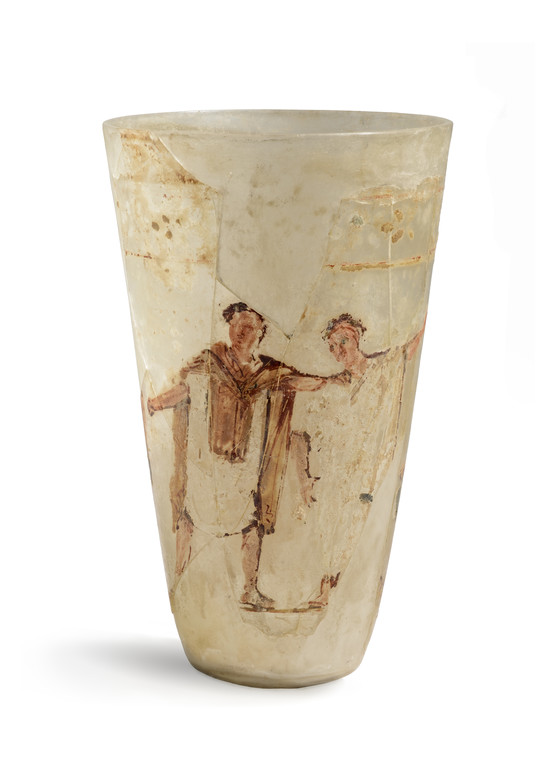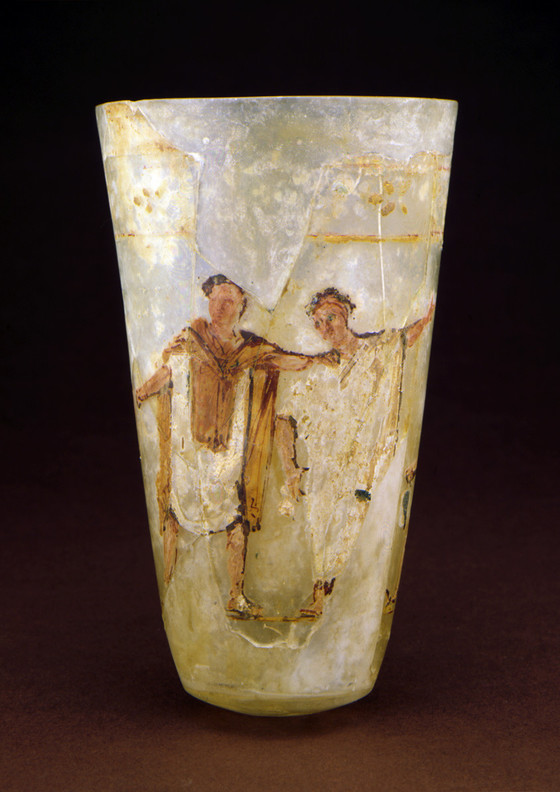The technique of glass-blowing was developed in the late first century B.C., and radically transformed the glass industry, making production quicker and easier, and glassware more readily available....
The technique of glass-blowing was developed in the late first century B.C., and radically transformed the glass industry, making production quicker and easier, and glassware more readily available. Glassworkers employed numerous techniques to decorate their vessels - tooling whilst they were hot, engraving or carving when cold. Rarely preserved are examples of painted glass. This beaker is therefore particularly valuable, and was doubtless a luxury vessel the rim preserves traces of gilding - made for a cultured and high-class elite. It would be remarkable for its good state of preservation alone, but the enigmatic scene and fragmentary inscription render it the most fascinating vessel within LACMAs significant collection of ancient glass.
At the center of the scene are a youth and a woman, both wearing heavy cloaks. The woman seems to sway and her companion supports her; given that they both wear wreaths, we may interpret them as symposiasts. They look towards a closed door, and are flanked by a grown-up and a boy. Both hold what might be lanterns, and so the scene looks like a night-time incident after a symposium. Much depends on the reading of the Greek inscription that fills the spaces between the figures, now partially lost or damaged. It should refer to the action or the dialogue of the characters, but even though some hundred letters have been read with certainty, nothing that has been discerned finds parallels in known textual sources. The door is a staple prop in the comic plots of plays of Terence, often adapted from Greek comedies such as those by Menander, and it is tempting to see this as a climactic moment in a now-unknown comedy. Another interpretation retains the idea of theatrical inspiration, but based on a restoration of the inscription, takes the scene to depict an encounter at a brothel. The grown male beside the door would be the protagonist, frustrated at the high price of courtesans, and the man in the center, the brothel-keeper, offering him a different woman.
David Saunders, Ancient Greek & Roman Art, 2008
More...




